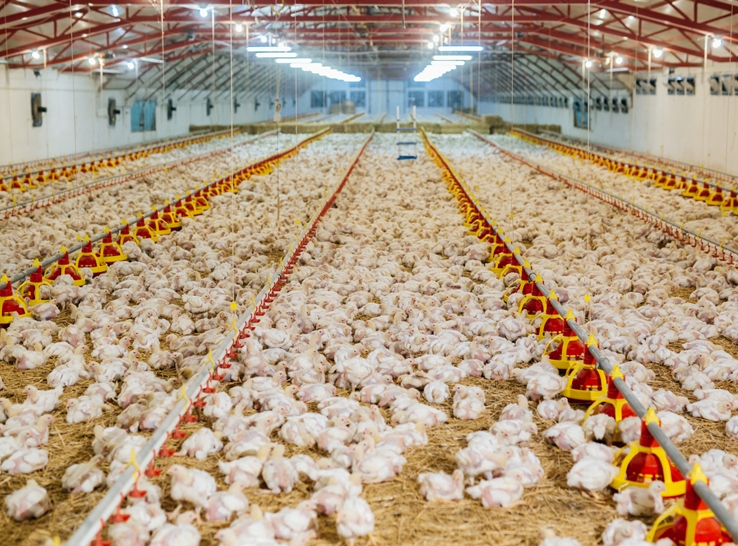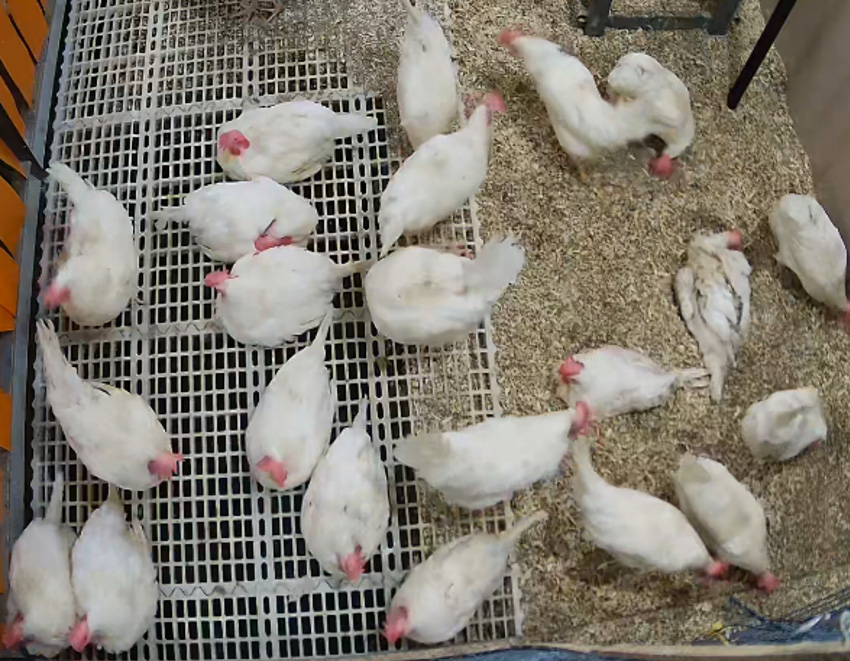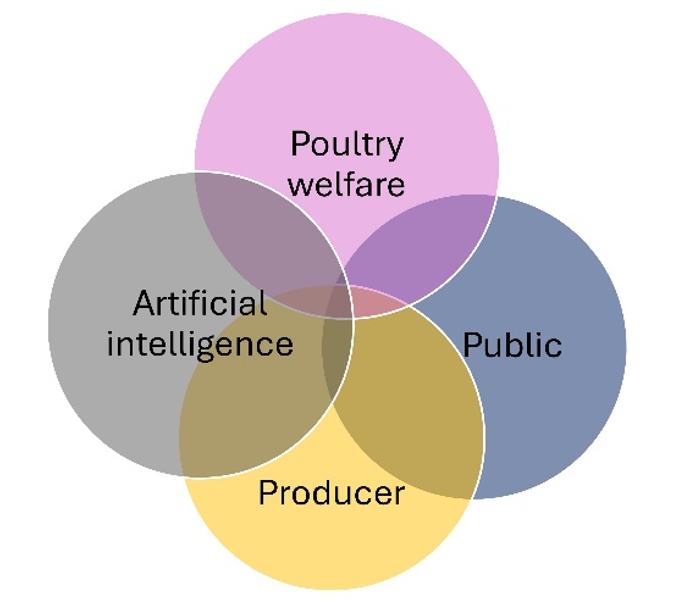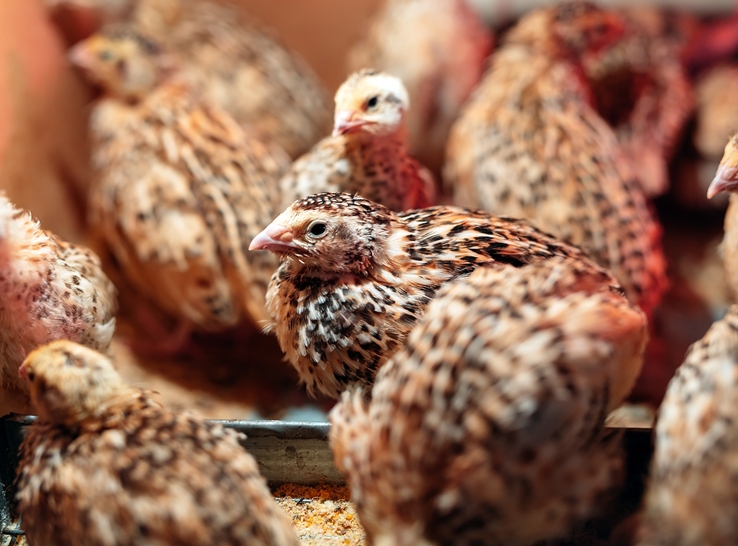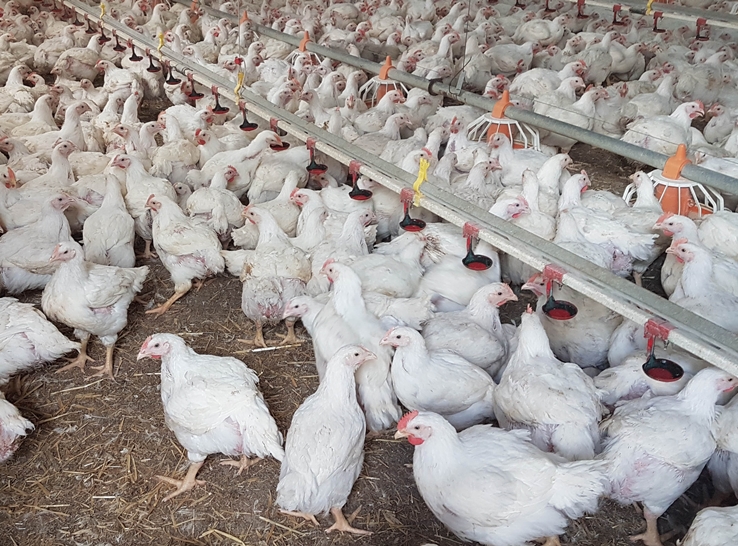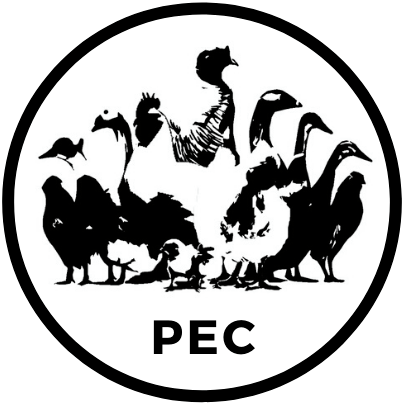By Gideon Ajibola and Marisa Erasmus, PhD
Purdue University
Main photo of layer flock by G. Ajibola
Introduction
Animal welfare pertains to the quality of life of an animal, denoting the cumulative positive and negative experiences of an animal.1 The welfare of farmed animals impacts their development and productivity, shaping both public perception and consumer behavior regarding animal products. Thus, animal welfare lies at the intersection of public and producer interests. Maintaining public trust regarding poultry production demands that birds be raised humanely and live a life worth living. This can be achieved by continuously monitoring the health, behavior, and responses of the flock to dynamic environmental situations.
Artificial intelligence (AI) is rapidly becoming a staple tool across various fields, including healthcare, finance, transportation, and agriculture.2 Artificial intelligence can be defined as a network of technological tools that mimic human reasoning and decision-making to accomplish tasks or resolve issues.3,4 Contemporary AI technology possesses the capability to collect and interpret visual and audio data—referred to as computer vision and audition. This could be a transformative tool for enhancing poultry management practices.
Poultry welfare and artificial intelligence
In the poultry industry, it can be challenging to identify welfare issues in large flocks until diseases and mortalities become apparent. For instance, disease-related changes in bird behavior may only be noticed once birds develop overt symptoms such as sneezing, snicking or a dramatic drop in feed and water intake. Using AI to detect subtle behavioral changes early can help producers prevent or promptly attend to these welfare issues that may arise in their flocks. However, there is limited use of technological tools to monitor and assess poultry welfare. Therefore, it is imperative to inform producers and the public of why and how AI can improve poultry welfare.
Harnessing the eyes and ears of technology
Computer vision
Traditional welfare assessment involves an observer walking through the barn to assess the behavior and appearance of the birds, much like producers performing their daily flock checks. With computer vision, studies have shown that AI-powered cameras mounted in the barn can continuously record the behavior,5–7 posture,8 plumage appearance,9 distribution10 and activities11 of the birds, providing information regarding the welfare of the flock. For instance, a sick bird would isolate itself from the flock and have limited activity. The AI tool can flag the bird and notify the farmer for action. Researchers have been able to use AI-powered cameras for disease surveillance;12,13 for instance, the cameras collected fecal scans of the birds and raised an alarm for anomalies in the color and texture of the dropping, detecting outbreaks of coccidiosis, salmonella, and Newcastle disease with 98% accuracy. Regarding bird behavior, the spatial activity and distribution of birds are indicators of resource utilization, environmental conditions, and health. Birds may huddle and aggregate as a behavioral response to low temperatures (cold stress) or during piling (see our previous Poultry Press article on piling behavior here). The AI tool can flag the dense clustering of birds and notify producers for swift intervention.
Computer audition (machine listening)
Sounds produced by animals are called vocalizations. These vocalizations contain information about the birds’ welfare (see our previous Poultry Press article about chicken vocalizations here). Researchers have confirmed that the specific vocalization that an animal produces is influenced by the animal’s emotional state.14,15 One such vocalization is a distress call; poultry are known to give distress calls when challenged by stressors. High occurrence of distress calls are associated with impaired growth and mortality in broiler chickens.16 With the use of AI-powered sound recorders, researchers were able to detect distress calls in chickens with 95% accuracy.17 Certainly, bioacoustic AI tools can monitor poultry vocalizations and notify producers of bioacoustics signals that denote stressful situations, allowing for on-time intervention.

Computer vision schematics: an AI-powered camera captures the activity of a bird and transmits the information to the human-trained processor [algorithm] for analysis, which in-turn stores data on welfare status in the monitoring device
Challenges to AI implementation
Cost and economic implications: The acquisition and installation of AI-based technological tools (cameras, sound recorders, software) for poultry welfare monitoring may have a high initial cost. Producers may be hesitant to increase their cost of production due to uncertainty about how the technology would improve their flocks’ productivity and profitability. Particularly, poor reliability of data generated by AI models can lower farmers’ expected return on investment in the technology.
Inconsistent infrastructure and technical knowledge deficits: The housing environment for poultry varies widely based on species, production stage, prevailing weather conditions, and producer preference. As a result, the deployment of AI tools in poultry barns will be specific to the housing design, environmental conditions, and management practices of each producer. This can impact the feasibility of using AI models as a universal tool because these models must be redesigned for specific housing environments. Further, most people lack proficiency in AI systems, requiring tech specialists to install them. Maintenance and upgrades of AI tools (hardware and software) are critical to the sustainability of technology, but many people also lack this vital technical know-how. Consequently, producers may perceive AI tools as inaccessible or impractical for their operations.
Public perception and lack of policies: The concerns of the public must be taken into consideration and addressed when using AI-based surveillance. Currently, there are no clear regulatory guidelines regarding the use of AI for monitoring live chickens, data integrity, and privacy.
Future needs
Standardization: There is a need for a standard operating procedure (SOP) detailing clear government regulations, ethical guidelines, data ownership principles, installation, usage, and maintenance of AI tools on farms. This SOP can commoditize AI, presenting it as an off-the-shelf tool19.
Accessibility and usability for farmers: In addition, affordability and accessibility of AI can improve adoption. Currently, AI tools are quite expensive for small to medium-sized farms to acquire. Further, AI models for automatic detection of welfare indicators must be trained by tech specialists. However, producers are non-experts in AI; therefore, simplifying the interface of models can ensure practical simplicity.
Effective AI adoption: Training and collaboration can foster strong partnerships between AI developers and farmers, facilitating the development of practical AI models for welfare monitoring. Extension programs and workshops educating farmers on the benefits of AI technologies for animal welfare can improve awareness and competence using AI tools.
Conclusion
Artificial intelligence mimics human intelligence while lowering human labor inputs. Human assessors are constrained by time and can become fatigued when assessing thousands of birds. Therefore, assessors typically examine the welfare of a limited number of birds in the flock. Artificial intelligence can enhance welfare surveillance in the poultry industry, facilitating continuous real-time monitoring of flocks, and early detection and intervention of welfare issues. Audiovisual AI systems offer the possibility to simultaneously monitor welfare indicators such as behavior, plumage condition, spatial activities, vocalizations, and fecal characteristics, encouraging data-driven management in the poultry industry. Artificial intelligence has the potential to improve poultry welfare but its implementation in commercial farms will require overcoming challenges related to cost, ethical concerns, maintenance, data reliability, and integration into existing farm operations.
References
- Mellor DJ. Updating Animal Welfare Thinking: Moving beyond the “Five Freedoms” towards “A Life Worth Living.” Anim Open Access J MDPI. 2016;6(3):21. doi:10.3390/ani6030021
- Tai MCT. The impact of artificial intelligence on human society and bioethics. Tzu-Chi Med J. 2020;32(4):339-343. doi:10.4103/tcmj.tcmj_71_20
- Monostori L. Artificial Intelligence. In: Laperrière L, Reinhart G, eds. CIRP Encyclopedia of Production Engineering. Springer; 2014:47-50. doi:10.1007/978-3-642-20617-7_16703
- Xu Y, Liu X, Cao X, et al. Artificial intelligence: A powerful paradigm for scientific research. The Innovation. 2021;2(4):100179. doi:10.1016/j.xinn.2021.100179
- Li G, Hui X, Lin F, Zhao Y. Developing and Evaluating Poultry Preening Behavior Detectors via Mask Region-Based Convolutional Neural Network. Anim Open Access J MDPI. 2020;10(10):1762. doi:10.3390/ani10101762
- Sozzi M, Pillan G, Ciarelli C, et al. Measuring Comfort Behaviours in Laying Hens Using Deep-Learning Tools. Anim Open Access J MDPI. 2022;13(1):33. doi:10.3390/ani13010033
- Bist RB, Subedi S, Yang X, Chai L. A Novel YOLOv6 Object Detector for Monitoring Piling Behavior of Cage-Free Laying Hens. AgriEngineering. 2023;5(2):905-923. doi:10.3390/agriengineering5020056
- Fang C, Zhang T, Zheng H, Huang J, Cuan K. Pose estimation and behavior classification of broiler chickens based on deep neural networks. Comput Electron Agric. 2021;180:105863. doi:10.1016/j.compag.2020.105863
- Zhang X, Zhang Y, Geng J, Pan J, Huang X, Rao X. Feather Damage Monitoring System Using RGB-Depth-Thermal Model for Chickens. Animals. 2023;13(1):126. doi:10.3390/ani13010126
- Yang X, Bist R, Subedi S, Chai L. A deep learning method for monitoring spatial distribution of cage-free hens. Artif Intell Agric. 2023;8:20-29. doi:10.1016/j.aiia.2023.03.003
- Chen BL, Cheng TH, Huang YC, et al. Developing an automatic warning system for anomalous chicken dispersion and movement using deep learning and machine learning. Poult Sci. 2023;102(12):103040. doi:10.1016/j.psj.2023.103040
- Machuve D, Nwankwo E, Mduma N, Mbelwa J. Poultry diseases diagnostics models using deep learning. Front Artif Intell. 2022;5:733345. doi:10.3389/frai.2022.733345
- Degu MZ, Simegn GL. Smartphone based detection and classification of poultry diseases from chicken fecal images using deep learning techniques. Smart Agric Technol. 2023;4:100221. doi:10.1016/j.atech.2023.100221
- Laurijs KA, Briefer EF, Reimert I, Webb LE. Vocalisations in farm animals: A step towards positive welfare assessment. Appl Anim Behav Sci. 2021;236:105264. doi:10.1016/j.applanim.2021.105264
- Reimert I, Webb LE, van Marwijk MA, Bolhuis JE. Review: Towards an integrated concept of animal welfare. animal. 2023;17:100838. doi:10.1016/j.animal.2023.100838
- Herborn KA, McElligott AG, Mitchell MA, Sandilands V, Bradshaw B, Asher L. Spectral entropy of early-life distress calls as an iceberg indicator of chicken welfare. J R Soc Interface. 2020;17(167):20200086. doi:10.1098/rsif.2020.0086
- Mao A, Giraudet CSE, Liu K, et al. Automated identification of chicken distress vocalizations using deep learning models. J R Soc Interface. Published online June 29, 2022. doi:10.1098/rsif.2021.0921
- Ajibola GA, Kilders V, Erasmus MA. Perspective paper-pendingpublications. doi:10.5555/12345678
- Abonamah AA, Tariq MU, Shilbayeh S. On the Commoditization of Artificial Intelligence. Front Psychol. 2021;12:696346. doi:10.3389/fpsyg.2021.696346
To view all issues of Poultry Press, click here.
Editor’s note: Content on Modern Poultry’s Industry Insights pages is provided and/or commissioned by our sponsors, who assume full responsibility for its accuracy and compliance.

